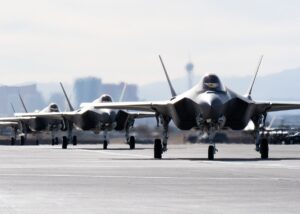
High costs for U.S. Air Force manned air-to-air and strike platforms, such as the future Next Generation Air Dominance (NGAD) sixth-generation fighter, the Lockheed Martin [LMT] F-35, the Northrop Grumman [NOC] B-21 Raider bomber, and the Boeing [BA] F-15EX, have the service examining a "system of systems" approach for fighters and bombers in which manned aircraft could control a small group of combat drones. "One of the problems we have in the Air Force is that the next generation of…














